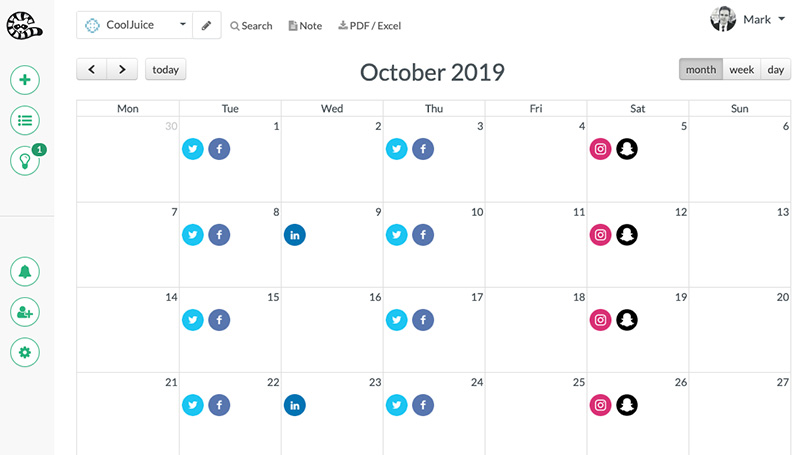Content creation is a crucial aspect of digital marketing. A well-organised content calendar can help you stay on track by planning your content in advance, ensuring that you consistently publish relevant and timely content. In this article, we’ll discuss organising your content calendar for a full month.
Step 1: Set Goals and Objectives
Before you start planning your content, it’s essential to set goals and objectives. Your content should align with your overall marketing strategy and help you achieve your goals. For example, if you want to increase website traffic, your content should focus on providing valuable information that appeals to your target audience.
If your goal is to increase social media engagement, your content should be shareable and incorporate visuals that grab attention.
Step 2: Identify Key Themes and Topics
Once you’ve set your goals, the next step is to identify key themes and topics that align with your goals. These themes and topics should be relevant to your target audience and reflect their interests, needs, and pain points.
You can create a list of topics based on keyword research, social media trends, customer feedback, and industry news.
Step 3: Create a Content Calendar Template
A content calendar template can help you organise your content and keep track of important dates and deadlines. You can use a spreadsheet, a calendar tool, or a project management tool to create your template. Your template should include the following columns: date, content type, topic, keywords, status, and deadline.
Step 4: Fill in Your Content Calendar
With your template in place, you can start filling in your content calendar. Start by assigning topics to specific dates based on their relevance and timeliness. For example, if you’re planning to launch a new product, you may want to dedicate a week to pre-launch content, followed by a week of launch-related content.
You can also assign specific content types to certain days of the week, such as blog posts on Mondays, social media posts on Wednesdays, and email newsletters on Fridays.
Step 5: Incorporate Holidays and Special Events
Don’t forget to incorporate holidays and special events into your content calendar. These can provide opportunities to create timely and relevant content that resonates with your audience. For example, you can create Halloween-themed content in October or Valentine’s Day-themed content in February.
You can also create content around industry conferences, product launches, or other significant events.
Step 6: Review and Adjust Your Calendar
Once your content calendar is complete, take some time to review it and make adjustments as needed. You may need to shift some topics around or add new topics based on new developments in your industry or changes in your marketing goals.
It’s also a good idea to review your calendar on a regular basis, such as every week or every two weeks, to ensure that you’re on track and that your content is still relevant and timely.
Conclusion
Organising a full month’s content calendar may seem like a daunting task, but with the right approach, it can be a straightforward and effective way to plan your content and ensure that you’re providing value to your target audience.
By setting goals, identifying key themes and topics, creating a content calendar template, filling in your calendar, incorporating holidays and special events, and reviewing and adjusting your calendar regularly, you can create a content plan that helps you achieve your marketing objectives and connect with your audience.
If you’re looking for a powerful platform to create your social media content calendar, ContentCory is the platform for you. With its comprehensive range of tools and features, you can plan, create, and analyse your social media content with ease. So, why wait? Register now and take your social media marketing to the next level!


